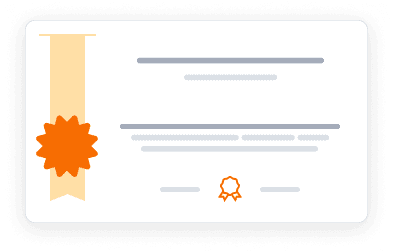This course is part of Data Science.
This advanced course, part of the Data Science MicroMasters program, focuses on the mathematical foundations of data science through probability and statistics. Students learn to analyze complex, noisy datasets using Python and Jupyter notebooks. The course covers essential concepts including random variables, dependence, correlation, regression, PCA, entropy, and MDL, combining theoretical understanding with practical application.
3.6
(15 ratings)
79,942 already enrolled
Instructors:
English
English
What you'll learn
Master mathematical foundations of machine learning and data science
Develop statistical literacy and confidence interval interpretation
Apply probability theory to real-world data analysis
Understand advanced concepts like PCA and entropy
Gain hands-on experience with Python-based statistical analysis
Skills you'll gain
This course includes:
PreRecorded video
Graded assignments, Exams
Access on Mobile, Tablet, Desktop
Limited Access access
Shareable certificate
Closed caption
Get a Completion Certificate
Share your certificate with prospective employers and your professional network on LinkedIn.
Created by
Provided by

Top companies offer this course to their employees
Top companies provide this course to enhance their employees' skills, ensuring they excel in handling complex projects and drive organizational success.





Module Description
This comprehensive course provides a deep dive into the mathematical foundations essential for data science. Students explore probability theory and statistics through a hands-on approach using Python and Jupyter notebooks. The curriculum covers advanced topics such as random variables, correlation, regression, and Principal Component Analysis (PCA). The course emphasizes both theoretical understanding and practical application, preparing students for real-world data analysis challenges.
Fee Structure
Individual course purchase is not available - to enroll in this course with a certificate, you need to purchase the complete Professional Certificate Course. For enrollment and detailed fee structure, visit the following: Data Science
Instructors

5 Courses
Distinguished Information Theory Scholar and Machine Learning Pioneer
Dr. Alon Orlitsky serves as the Qualcomm Professor for Information Theory and its Applications at the University of California, San Diego, where he holds joint appointments in the Electrical and Computer Engineering and Computer Science departments. After earning his B.Sc. in Mathematics and Electrical Engineering from Ben Gurion University in 1981 and Ph.D. from Stanford University in 1986, he spent a decade at Bell Labs before joining UCSD in 1997. His groundbreaking research spans information theory, machine learning, probability estimation, and speech recognition, earning him numerous prestigious honors including the IEEE W.R.G. Baker Award (1992), IEEE Information Theory Society Paper Award (2006), NeurIPS Best Paper Award (2015), and the Claude E. Shannon Award (2021). He is particularly recognized for founding the Information Theory and Applications Workshop in 2006, which has become a crucial bridge between information theory and emerging fields like machine learning. His leadership roles include serving as IEEE Information Theory Society President in 2016 and contributing to significant outreach projects including the "Bit Player" movie.

6 Courses
Pioneering Machine Learning Researcher and AdaBoost Algorithm Inventor
Dr. Yoav Freund, born in 1961, serves as Professor of Computer Science and Engineering at the University of California San Diego, where he has revolutionized machine learning through his groundbreaking work on boosting algorithms. An alumnus of Israel's elite Talpiot program, he is internationally renowned for co-inventing the AdaBoost algorithm with Robert Schapire, a breakthrough that earned them both the 2003 Gödel Prize in Theoretical Computer Science and the 2004 ACM Paris Kanellakis Theory and Practice Award. His research spans computational learning theory, probability theory, information theory, and pattern recognition, with particular focus on developing machine learning applications in bioinformatics, computer vision, finance, and high-performance computing. His innovative "black-box" approach to evaluating decision algorithms has transformed how machine learning systems are developed and compared. Elected as an AAAI Fellow in 2008, his work continues to influence various scientific communities and industry applications, from spam filtering to optical character recognition, making him one of the most influential figures in modern machine learning theory and practice.
Testimonials
Testimonials and success stories are a testament to the quality of this program and its impact on your career and learning journey. Be the first to help others make an informed decision by sharing your review of the course.
Frequently asked questions
Below are some of the most commonly asked questions about this course. We aim to provide clear and concise answers to help you better understand the course content, structure, and any other relevant information. If you have any additional questions or if your question is not listed here, please don't hesitate to reach out to our support team for further assistance.



